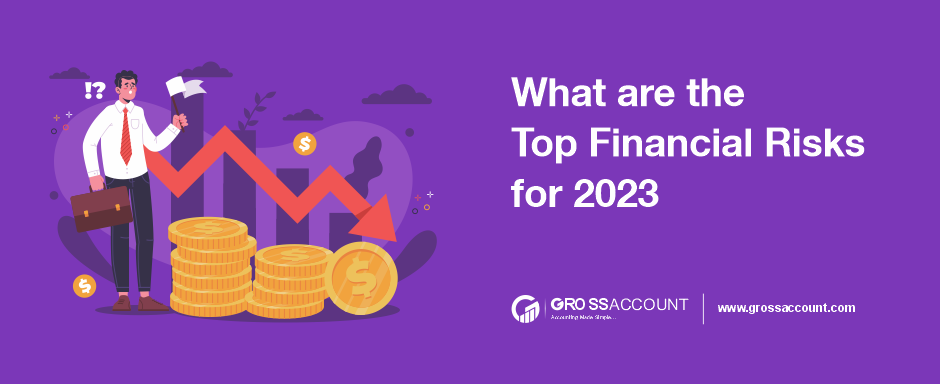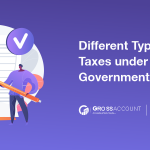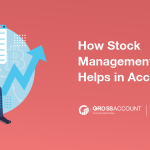Introduction
The current economic situation is quite complex and fluctuates from time to time. Financial Risks arise with many factors and businesses need to consider them. 3 years since the pandemic but still many countries are recovering from their economic collapse.
As we head into 2023, businesses of all sizes are faced with a variety of financial risks that could impact their bottom line. From economic uncertainty to shifting regulations, companies need to be aware of these risks and take steps to mitigate them.
Several factors can pose a risk to the financial system, such as interest rate fluctuation, the government’s new policy-making, changes in taxes, geopolitical tensions, natural disasters, and technological disruptions. Identifying these risks early can mitigate their impact and minimise potential losses for investors, businesses, and governments. As for this blog writing I am not a professional financial advisor or any charted accountant I just do research on some topics and need to point out some areas that you may consider for your businesses in the upcoming year.
Here are some of the Top Financial Risks for 2023

1) Economic Uncertainty
The COVID-19 pandemic continues to create uncertainty in the global economy, with many countries experiencing slower economic growth and increasing levels of debt. This uncertainty can lead to reduced consumer confidence, decreased demand for goods and services, and decreased revenues for businesses.
Recently the news was that the Sri Lankan economy collapsed and it results in a disaster. People went through the president’s bang-low in Colombo and even the army couldn’t do anything to its people. If your business is related to import-export then you may to consider every aspect of what going on in the exporting countries because your company may deliver some products to Sri Lanka and now it is in the dockyard area. None of the answers come from the country. So, the point is just to research from time to time on government policies.
2) Inflation
The first question you have in mind is what is Inflation? Simply Inflation is a rate at which goods and services increase over time because of certain demand and supply changes in the market. Also, labour shortages leading to higher daily wages of other workers is contributed to inflation. When inflation rises, the cost of goods and services also increases, which can lead to decreased profitability for businesses. The central bank of any country can control inflation. A key challenge for policymakers this year will be balancing inflation control with economic growth.
Inflation is one of the top financial risks that businesses should be aware of in 2023. Inflation can also impact consumer spending, which can affect the demand for goods and services that businesses offer. Businesses need to keep a close eye on inflation trends and adjust their pricing and cost structures accordingly.
Before we go further you need to know what is CFD (Contract for differences). A CFD is an agreement between an investor and a share market broker to exchange the difference in the value of any financial products during the period of the contract. When inflation rises, asset price volatility rises, which impacts CFD trading. In light of increased volatility, CFD brokers may need to adjust their risk management strategies to remain profitable.
Several measures can be taken, including adjusting margin requirements, reviewing spreads, and cutting other costs. To attract and retain clients, trading conditions and fees must be constantly monitored and modified by the businesses.
3) Regulatory changes
With the changing political landscape in many countries, regulations and policies are likely to shift. This can lead to increased compliance costs for businesses, as they must navigate new laws and regulations. Companies need to stay up-to-date on regulatory changes and adjust their operations accordingly.
Also, interest rates can affect your finance in 2023. Higher interest rates can make it more expensive for businesses to borrow money, which can impact their ability to invest in growth and development. Lower interest rates, on the other hand, can lead to increased borrowing and potentially higher levels of debt.
4) Geopolitical Risks
Political instability, trade disputes, and other geopolitical events can lead to sudden changes in the global economy. These changes can create uncertainty and volatility in financial markets, which can have a ripple effect on businesses of all sizes.
Recently you show on news disputes about the Sudan crisis. Sudan is one of 55 nations in the African region. Political instability could result in a financial crisis in Sudan over some time.
Companies need to keep a close eye on geopolitical developments and be prepared to adjust their strategies and operations as needed.
5) Cybersecurity Risks
As more companies rely on technology to conduct their operations, the risk of cyber attacks continues to grow. These attacks can be costly for businesses, not only in terms of financial losses but also in terms of repetitional damage. To mitigate these risks, businesses need to invest in cybersecurity measures such as firewalls, data encryption, and employee training.
Conclusion
As we head into 2023, businesses must be aware of the financial risks they face and take steps to mitigate them. Inflation, geopolitical risks, cybersecurity threats, and regulatory changes are just a few of the many factors that could impact a company’s finances. By staying vigilant and taking proactive steps to mitigate these risks, businesses can position themselves for success in the years ahead.
Investing in robust financial planning tools, such as accounting software, can help companies keep track of their finances and respond quickly to changing market conditions. GrossAccount helps you create customizable software that easily manages your day-to-day task with the features of Invoicing, stock management, accurate reports, bookkeeping, Inventory management and many more. Visit the feature page to know more.
FAQs
1) What is the economic situation in India?
India’s economic conditions are better and better these days. By beating the 5th largest economy in the world last year India is on the right path to recover from the pandemic.
2) What are the challenges that manufacturing industries could face in the future?
Manufacturers may face additional challenges such as changes in global trade policies, technological disruptions, and increased competition. To overcome these challenges, manufacturers may need to adopt new technologies, diversify their supply chains, and invest in research and development.
3) What will be the rate of RBI?
RBI’s ideal inflation band is range between min 2% to max 6%. As of this date to the monetary policy of RBI, the inflation rate of India is more than 6% and to control inflation RBI curbing the repo rate for banks by 6.50%.






